Pork Rillettes (Rillettes de Porc)
This post may contain affiliate links. See my disclosure policy.
A traditional Pork Rillettes recipe, the delectable French delicacy that will have everyone’s mouths watering for more! Homemade rillettes is easy to make, is far cheaper than store-bought, and it’s far fresher and more flavorful than anything you’ll get at even the most high-end stores!
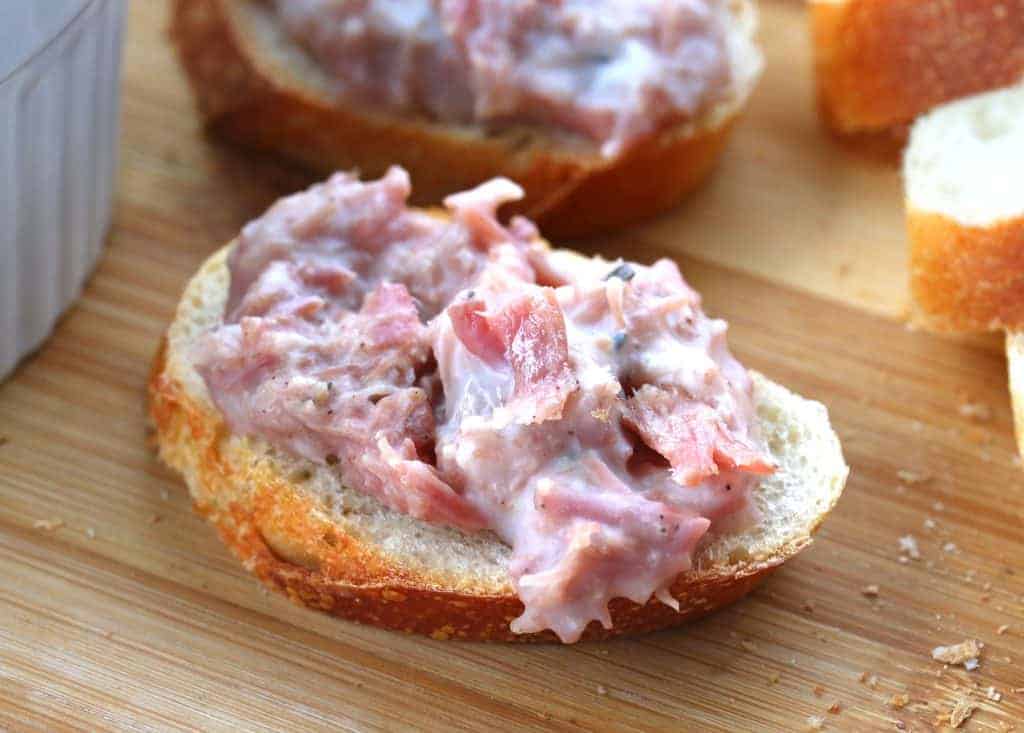
I’m always amused by dishes now considered gourmet and upscale that were in years past ridiculed as peasant food. Foods like lobster, oysters, foie gras, and famous dishes like coq au vin, beef bourguignon and gravlax used to be the food of the poor – now they’re only served in the nicest restaurants and come with high price tags.
Confit, a French delicacy, is another such example. Its preparation had little to do with luxury, rather it was done out of necessity. It involves a centuries-old method of slowly poaching meat in fat and seasonings. Left to cool, the fat rises to the top, solidifies, and creates a protective covering of fat that prevents any oxygen from reaching the meat (which is what causes spoilage). This method thus preserves the meat, extending its shelf-life, and the meat underneath can be stored for up to several months. This same method in the UK is known as potted meat.
What is Pork Rillettes?
Rillettes, today’s featured recipe and also a French delicacy, are a type of confit. They’re commonly made from pork but are also made with duck, goose, rabbit, poultry and fish. The process involves cubing the meat, generously seasoning it, slowly simmering it in fat until fork tender, finely chopping the meat, mixing in some of the fat to make a spreadable consistency, and then letting it cool with a layer of fat over it.
Properly sealed, rillettes will keep in the fridge for several months (and only taste better with time) so they’re super convenient for always having on hand for entertaining. Simply cut up some baguettes, spread them with rillettes, and place them on a serving platter with things like olives, pickles, pepperoncini, pickled asparagus, pickled onions, pickled peppers, etc. and you’ve got a wonderfully elegant and perfectly delicious option for hors d’oeuvres or even a light meal. It’s no wonder rillettes have been wildly popular throughout France for generations – they are incredibly delicious and are one of my favorite go-to’s for entertaining.
Imagine sinking your teeth into the most exquisitely flavored fork-tender pork that has been simmered for hours in aromatic spices and then spread on crispy baguettes…c’est très délicieux!
Be sure to select quality, pasture-raised pork for the best and most flavor possible. Coupled with the seasonings and quality lard (check out my tutorial on How to Make Lard), once you try these rillettes and let the flavors permeate your mouth, you will be hooked!
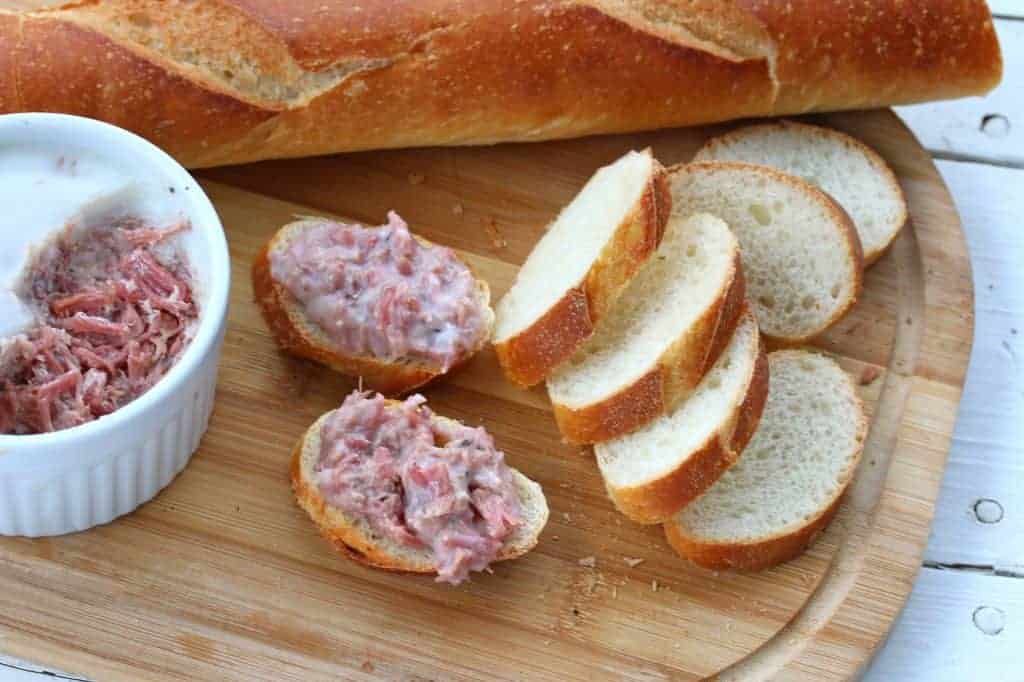
Pork Rillettes Recipe
Let’s get started!
Find a good piece of boneless pork shoulder. For optimal quality and flavor choose pasture-raised pork and dice it into 1-inch cubes. Place the pork in a large mixing bowl.
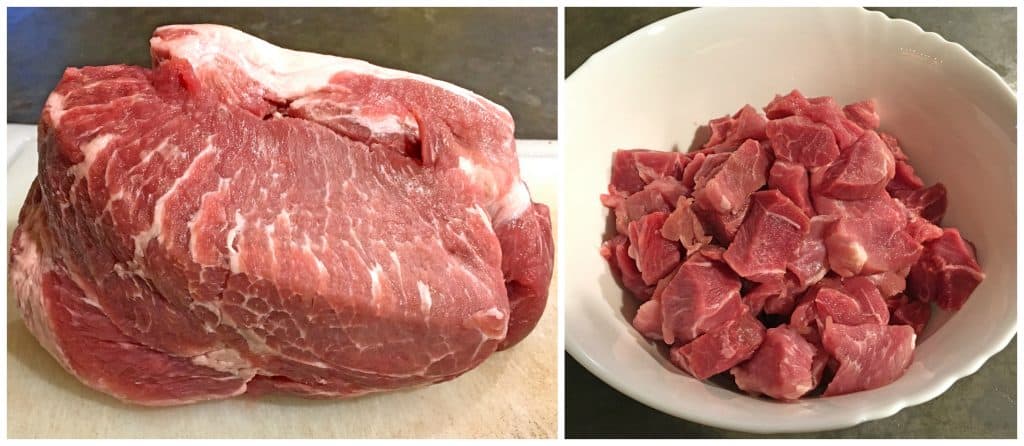
Add all remaining ingredients to the pork, except for the lard, and use your hands to mix and rub the pork until it is thoroughly combined with the spices. Cover with plastic wrap and refrigerate for 3 days.
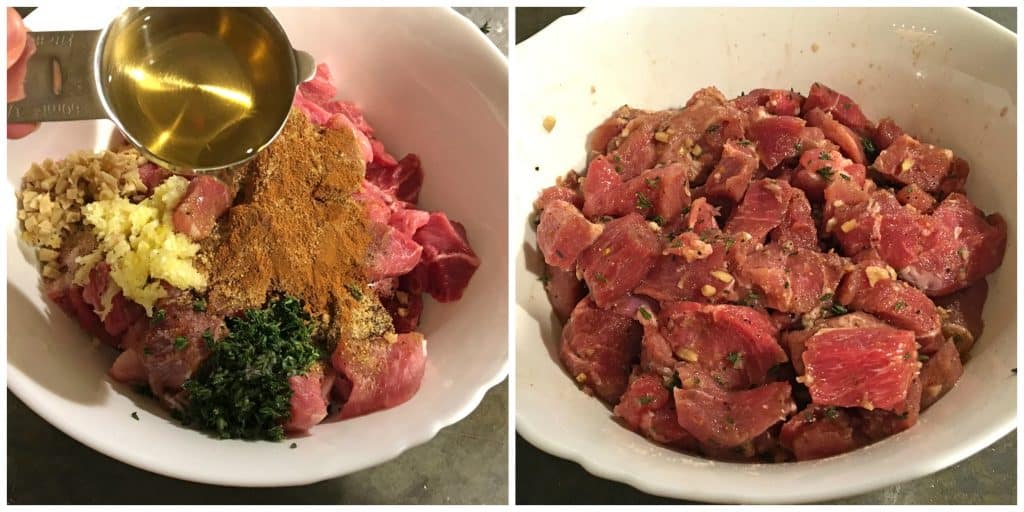
After 3 days, remove the pork and let it sit at room temperature for 30 minutes while you prepare the lard. Preheat the oven to 275 degrees F.
A note about lard: You’ll need about 14-18 ounces of high quality lard, depending on the molds you use for your rillettes. Be careful about where you get it as almost any lard you find in the grocery store is hydrogenated lard – avoid it. For pure, clean lard with the best flavor, you should ideally render your own from pasture-raised hogs – it’s super duper easy! Honestly, it is. PLUS, it’s much, MUCH cheaper than buying it!!
Check out my tutorial on How to Make Lard.
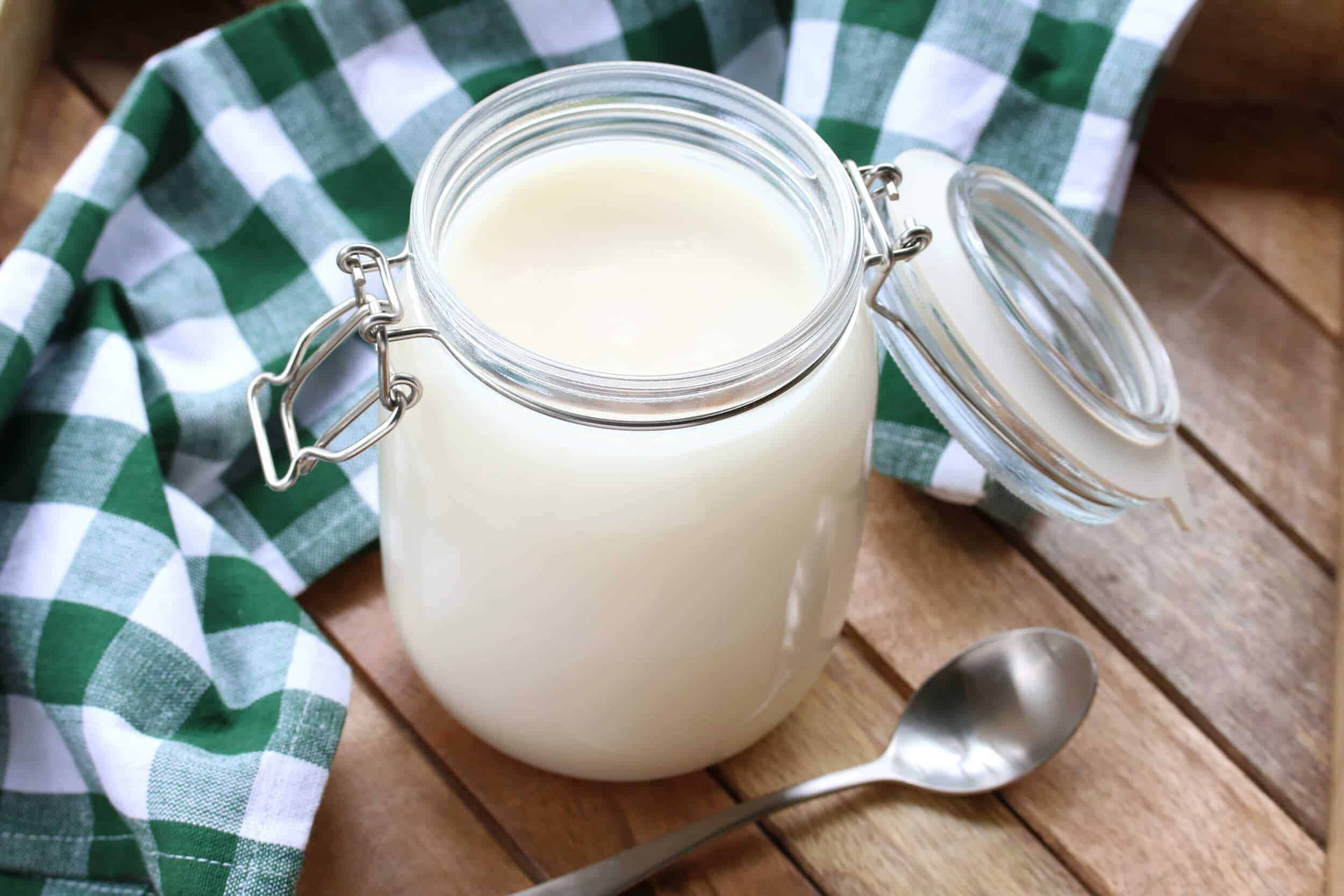
If you really don’t want to be bothered rendering lard yourself (it really is super easy, really truly), then I recommend this one which you can buy online.
Once you have the lard, melt it slowly in a saucepan until it is liquified.
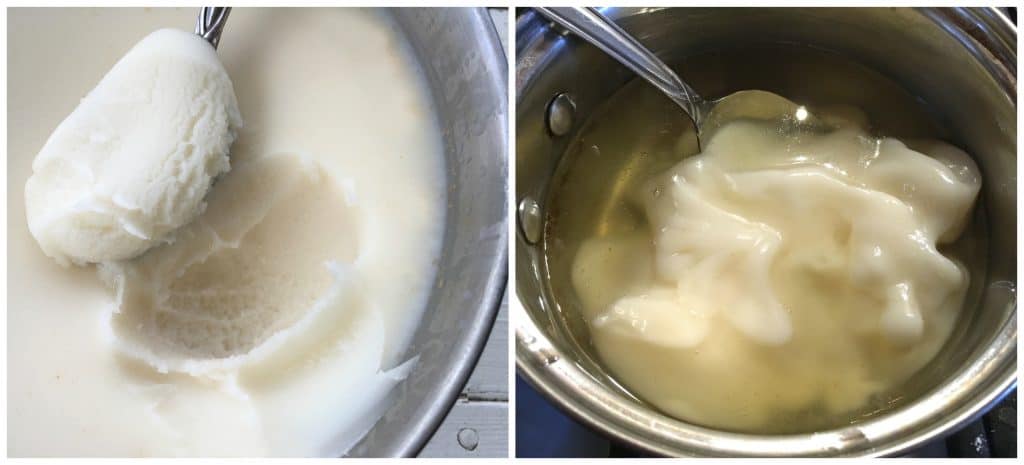
Place the pork in a Dutch oven, spread out evenly, and pour the melted lard over it making sure the meat is completely submerged under the lard. If not, melt some more lard and add it. If you’re completely out of lard and only need to add a little more to go, you can top it off with olive oil.

Cover the Dutch oven with the lid, place it in the preheated oven and cook for 2 ½ to 3 hours or until the pork is fork tender. The aroma coming from your oven as it’s simmering and when you lift the lid from the pot will have you salivating in anticipation!
Remove from the oven and let it cool down until cool down until cool enough to handle. Discard the juniper berries.
Use a slotted spoon to transfer the pork to a chopping board.
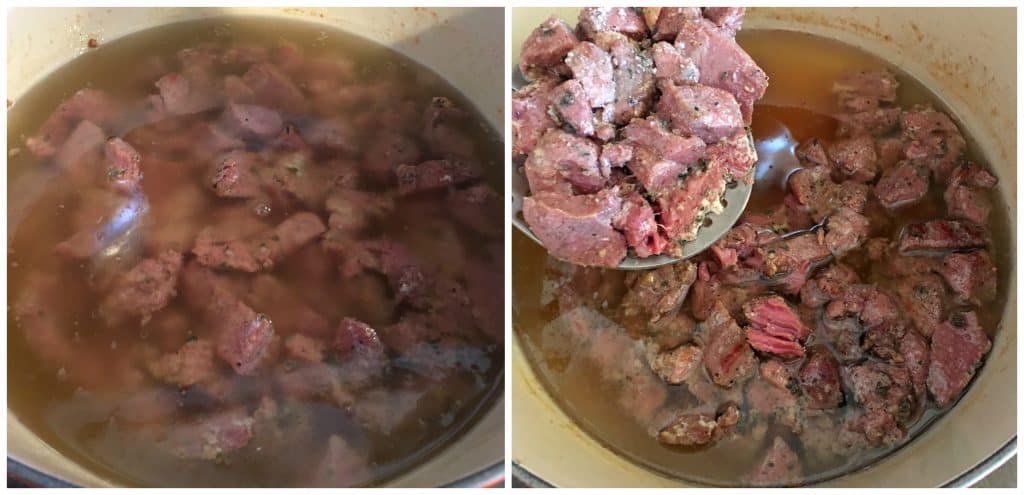
Use a ladle to skim the fat off the top of the liquid in the Dutch oven, being very careful not to scoop up the liquid with the fat. The fat will be floating on top and is fairly clear in color while the liquid underneath it is dark. Set the skimmed fat aside. As the liquid cools down any remaining lard on top will solidify and you can remove the rest. Pour the cooking liquid into a measuring cup and set aside.
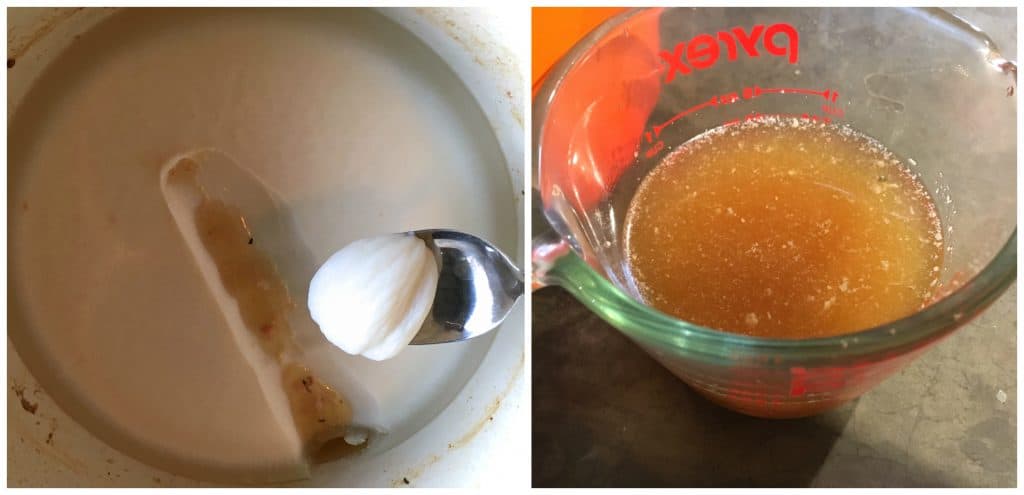
Finely chop the pork. Place the chopped pork in a large mixing bowl and add 1/3 of the reserved lard along with 1/3 of the liquid from the Dutch oven. Stir until well combined. Add salt to taste.
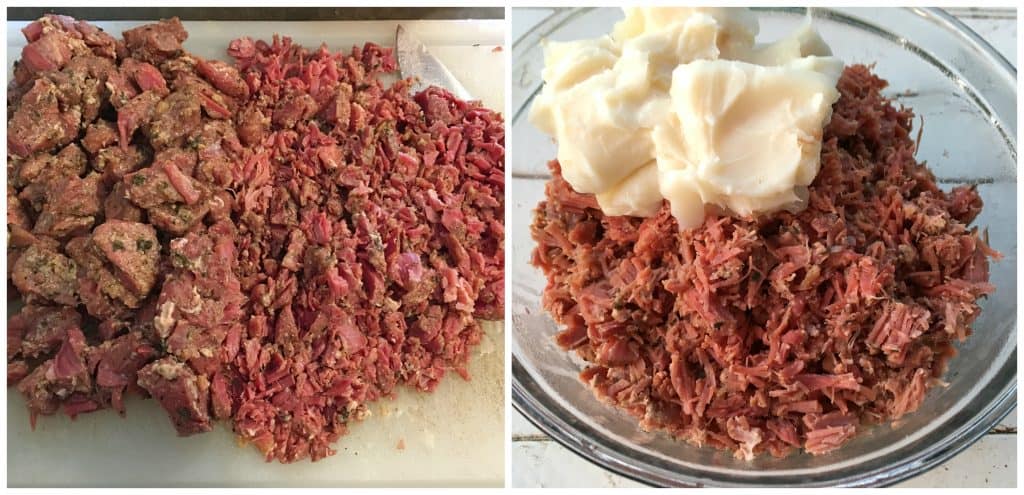
Place the meat in a large casserole dish or divide it between several smaller terrines according to your preference. Press the meat down gently to even it out. Chill for at least one hour.
Place the rest of the reserved lard in a saucepan and melt it. Pour it over the chilled rillettes so they are covered by at least ¼ inch of lard.
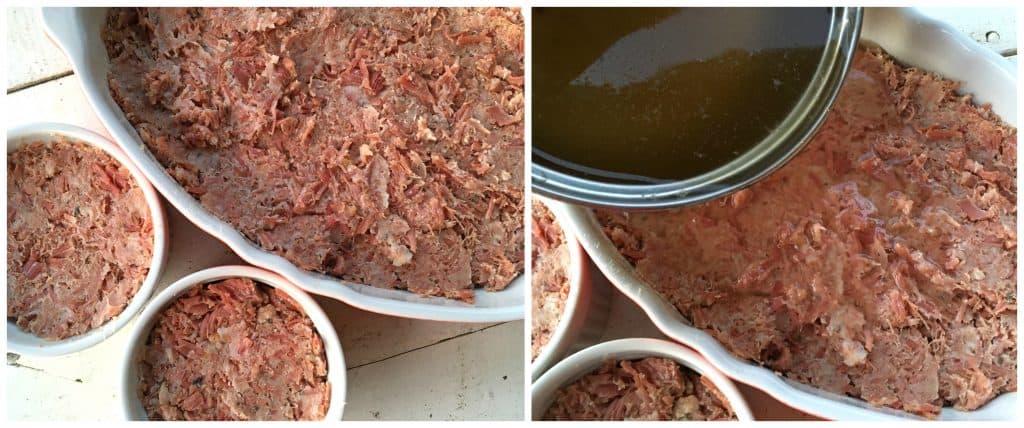
Cover and chill until the lard is solidified.
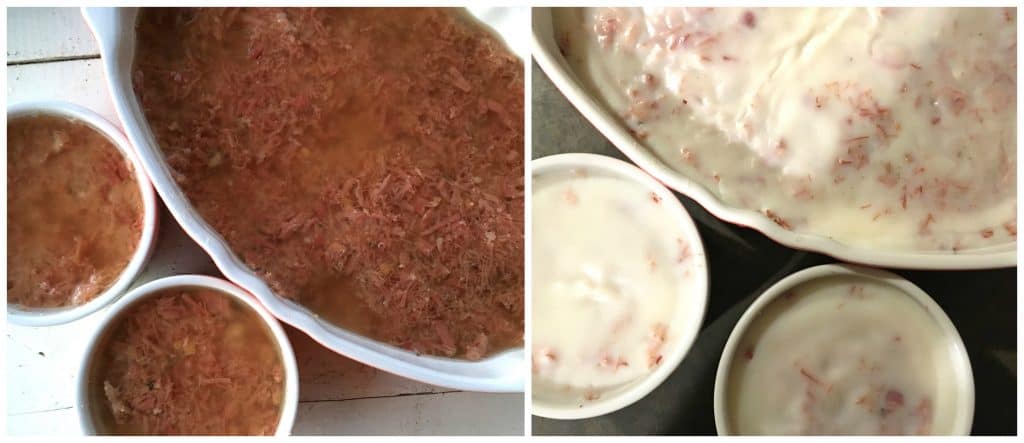
How to Serve Pork Rillettes
Pork rillettes are best eaten a few days later after the flavors have had time to meld but are also delicious eaten right away. The rillettes will keep in the fridge for at least 2 months and, if properly covered in fat with no air pockets, will last even longer.
Let the pork rillettes sit at room temperature for about an hour before serving so it is softened to a spreadable consistency. If you’re not going to eat it all and don’t plan to finish the leftovers within a few days, re-seal the exposed area with a layer of lard.
To serve, cut up some baguettes, spread them with rillettes, and place them on a serving platter with things like olives, pickles, pepperoncini, pickled asparagus, pickled onions, pickled peppers, etc. Serve as hors d’oeuvres or enjoy them as a light meal.

Enjoy!
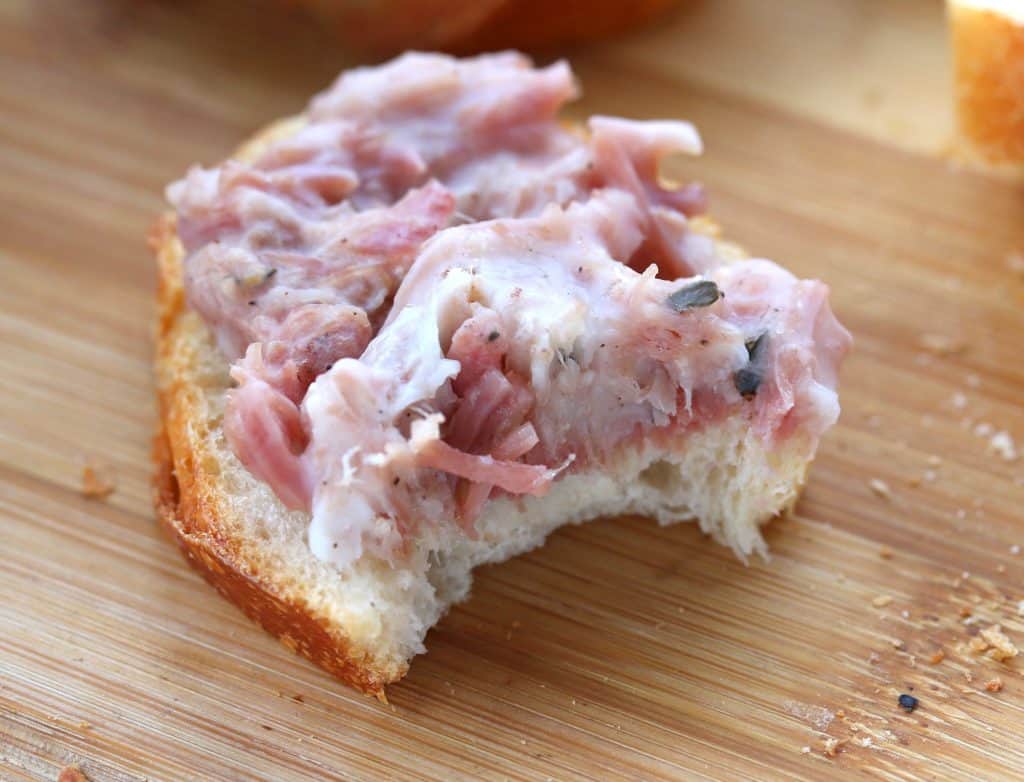
For more French favorites be sure to try my:
- Beef Bourguignon
- Coq Au Vin
- French Lentil Soup
- French Beef Stew with Old Fashioned Vegetables
- French Almond Plum Cake
- Nonnettes
- Cherry Clafoutis
- Pot de Creme
Save This Recipe
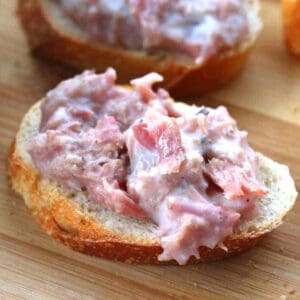
French Pork Rillettes (Rillettes de Porc)
Ingredients
- 3 pounds quality pork shoulder, preferably pasture-raised, cut into 1-inch cubes
- 2 1/2 tablespoons minced fresh garlic
- 1 1/2 tablespoons minced fresh ginger
- 1 1/2 tablespoons chopped fresh thyme
- 2 tablespoons sea salt
- 2 teaspoons ground coriander
- 1 teaspoon freshly ground white pepper
- 1/2 teaspoon freshly ground black pepper
- 3/4 teaspoon ground cinnamon
- 1/2 teaspoon freshly ground nutmeg
- 1/2 teaspoon curing salt #1 (aka Prague powder) (optional but recommended to prevent an unattractive brown/gray-colored meat once cooked)
- 1/4 teaspoon ground cloves
- 1/4 teaspoon ground allspice
- 1/4 teaspoon ground dried ginger
- 8 juniper berries
- 1/4 cup dry white wine
- 14 ounces quality pasture-raised pork lard (you’ll need 14-18 ounces)
- OR render your own lard (it’s super easy, here’s how!) (not to mention it’s MUCH cheaper!)
Instructions
- Place the cubed pork in a large mixing bowl and add all remaining ingredients except for the lard. Use your hands to mix and rub the pork until it is thoroughly combined with the spices. Cover with plastic wrap and refrigerate for 3 days.
- Remove the pork and let it sit at room temperature for 30 minutes while you prepare the lard. Preheat the oven to 275 degrees F.Melt the lard slowly in a saucepan just until liquefied.
- Place the pork in a Dutch oven, spread out evenly, and pour the melted lard over it making sure the meat is completely submerged under the lard. If not, melt some more lard and add it. Cover the Dutch oven with the lid, place it in the preheated oven and cook for 2 ½ to 3 hours or until the pork is fork tender. Remove from the oven and let it cool down until cool down until cool enough to handle. Discard the juniper berries.
Use a slotted spoon to transfer the pork to a chopping board and finely chop the meat. - Use a ladle to skim the fat off the top of the liquid in the Dutch oven, being very careful not to scoop up the liquid with the fat. The fat will be floating on top and is fairly clear in color while the liquid underneath it is dark. Set the skimmed fat aside. As the liquid cools down any remaining lard on top will solidify and you can remove the rest. Pour the cooking liquid into a measuring cup and set aside.
- Place the chopped pork in a large mixing bowl and add 1/3 of the reserved lard along with 1/3 of the liquid from the Dutch oven. Stir until well combined. Add salt to taste. Place the meat in a large casserole dish or divide it between several smaller terrines according to your preference. Press the meat down gently to even it out. Chill for at least one hour.
- Place the rest of the reserved lard in a saucepan and melt it. Pour it over the chilled rillettes so they are covered by at least ¼ inch of lard. Cover and chill.
- Let the rillettes sit at room temperature for about an hour before serving so it is softened to a spreadable consistency. If you’re not going to eat it all and don’t plan to finish the leftovers within a few days, re-seal the exposed area with a layer of lard.To serve, cut up some baguettes, spread them with rillettes, and place them on a serving platter with things like olives, pickles, pepperoncini, pickled asparagus, pickled onions, pickled peppers, etc.
- Rillettes are best eaten a few days later after the flavors have had time to meld but are also delicious eaten right away. The rillettes will keep in the fridge for at least a month and, if properly covered in fat with no air pockets, will last even longer.
Nutrition
Originally published on The Daring Gourmet March 8, 2018



















I use this recipe every Christmas when I make rillets for my father and step father, and it comes out perfect everytime! this year is no different and will be make them this weekend.
Oh that’s so wonderful, Liam, I’m thrilled to hear that and that it’s become a tradition – thank you very much!
Dear Madam: Cinnamon, allspice, coriander, ginger! How about some raisins?
This is rillettes, the world’s best savoury spread – not an American pizza.
As you yourself said it is supposed to be a simple peasant dish, and the whole beauty of rillettes is that incredible subtilty derived from as few flavourings as possible. i.e. Duck, pork, fat, pepper, thyme, with perhaps a ‘soupcon’ of nutmeg and some star anise – if you really want to play with fire. This is possibly the quintessential ‘Less is More’ exercise in French culinary subtlety. The whole idea is for no other flavour to be noticeable above the the melded magic of the meats and their renderings. Also the meat is supposed to be cooked to the colour every real lover of rillettes is looking for – the very pale pink-going-on-grey of a confit, not the weird Fluro pink colour shown in this recipe. Thankyou.
(P.S I am a French chef with over 50 years experience.)
Hi Ralph, I understand your premise but a chef’s prerogative to create and experiment is what adds life, flavor and variety. So I would ask you to consider the old rule of thumb “don’t knock it until you’ve tried it”. If you’ve tried it and still don’t like it, that’s fully your right.
On a side note, the “weird Fluro pink colour” you mention is something known as curing salt that preserves color and is an age-old tradition in French charcuterie making and beyond.
Ooh I wonder where I went wrong. Followed the recipe to a T, somehow the spices seemed too overpowering and the flavors don’t want to meld together, even though I let it rest for 2 days in the fridge before digging in.. The 5 day anticipation was met with much underwhelming disappointment unfortunately. Hubs and I usually demolish the rillettes we get in, but barely managed 2 tablespoons tonight, and I’m thinking how to repurpose the rest to not waste food. Not quite our cup of tea.
Thank you so much for this recipe! I ended up using my Dutch oven after all, and my rillettes are perfect!
I’m so glad you enjoyed it, Steeve, thank you!
Hi,
Can cook i cook this in a slow cooker?
Hi Steeve, I haven’t tried that but it should work, yes.